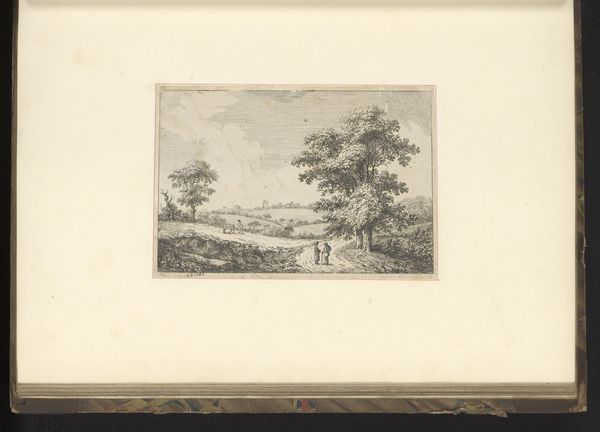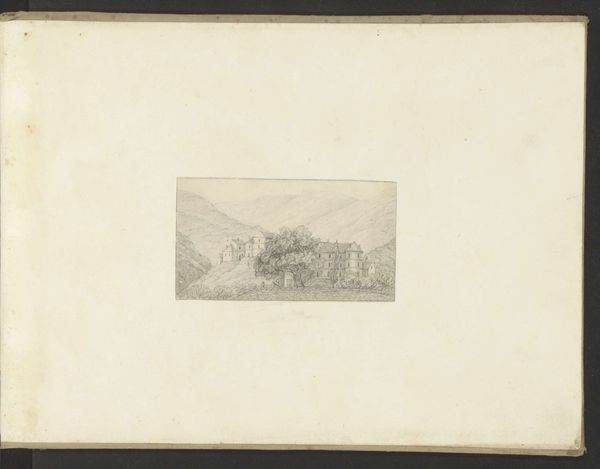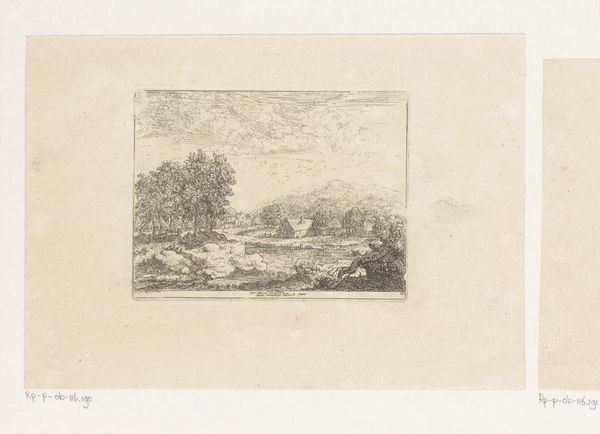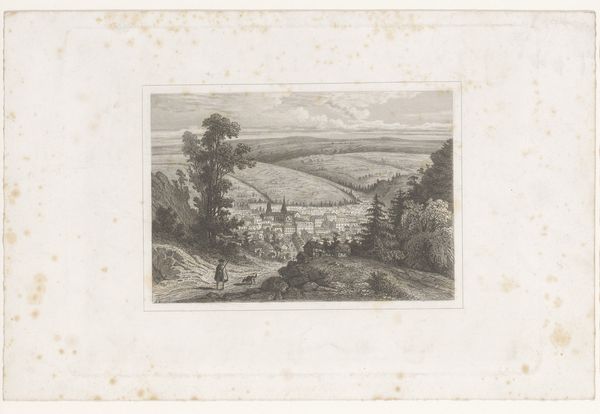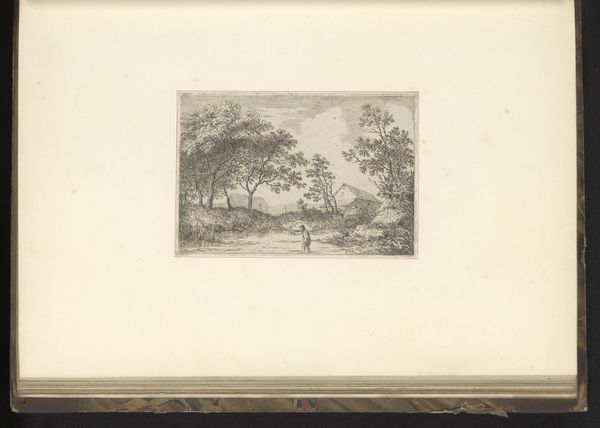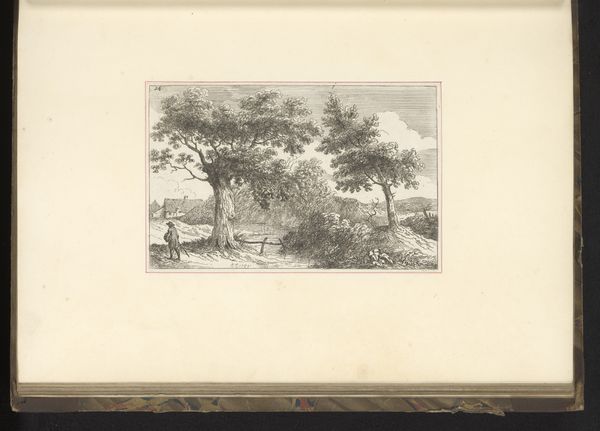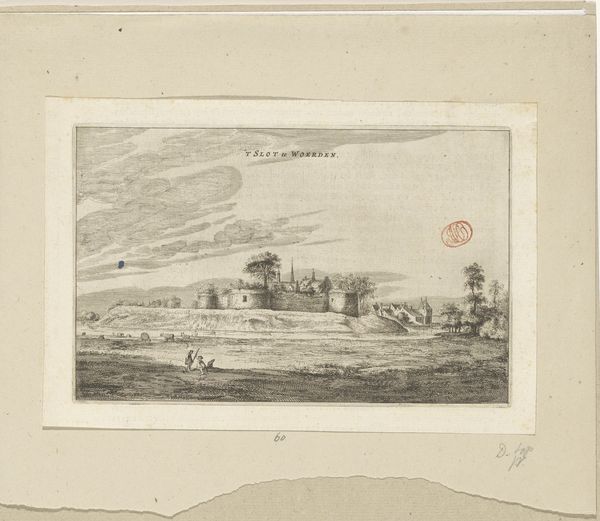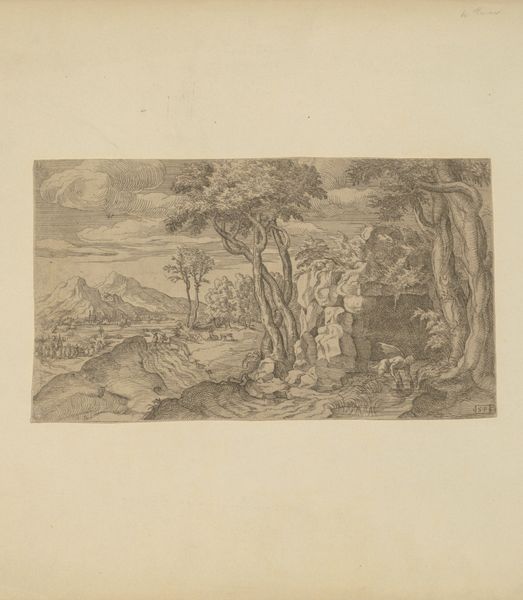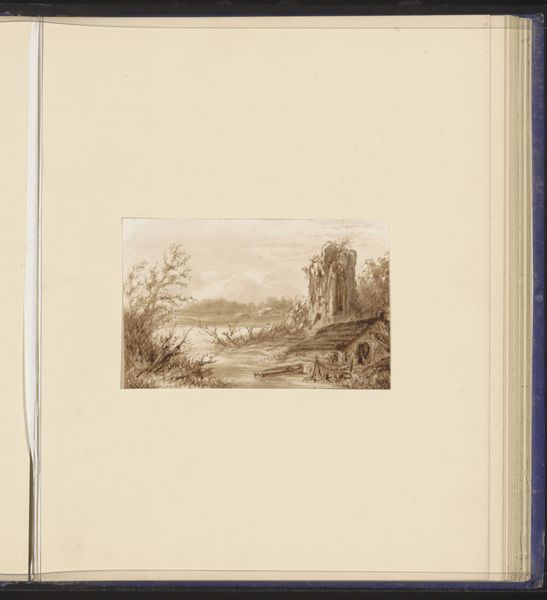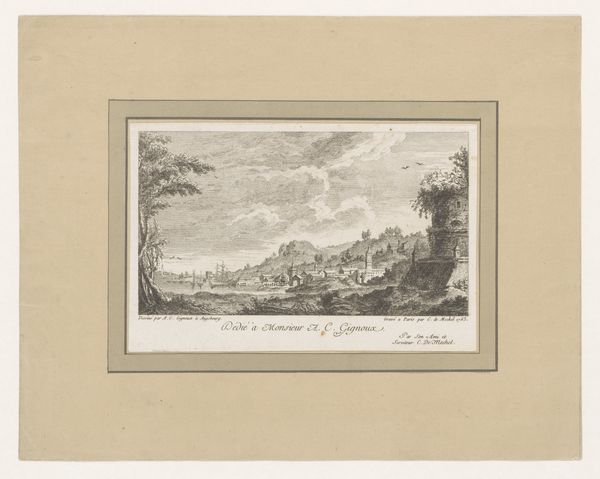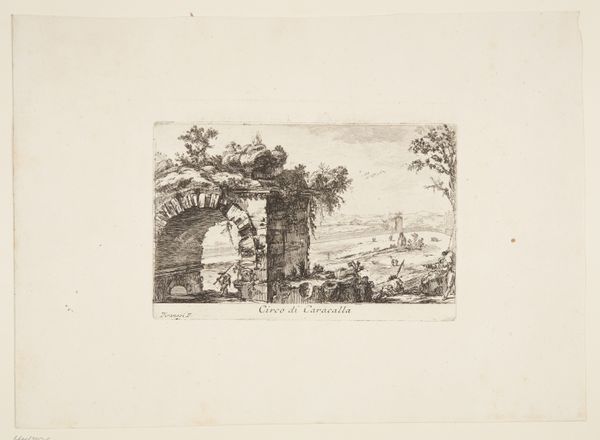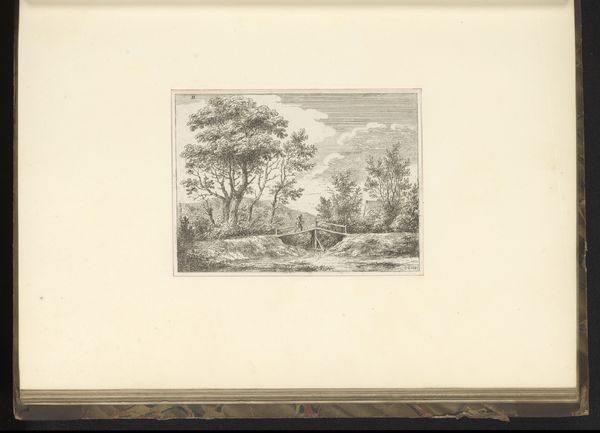
print, watercolor
#
baroque
# print
#
landscape
#
watercolor
#
coloured pencil
#
cityscape
#
watercolor
Dimensions: height 172 mm, width 260 mm
Copyright: Rijks Museum: Open Domain
Editor: This is "Gezicht op de stad Burgos" by Pieter van den Berge, created sometime between 1694 and 1737. It’s a watercolor print of a cityscape, currently held at the Rijksmuseum. I'm struck by how the artist captures both the grandeur of the city and these intimate, everyday scenes happening in the foreground. What do you see when you look at this piece? Curator: I see a carefully constructed narrative, reflecting the complex relationship between power, landscape, and lived experience. The panoramic view of Burgos presents a vision of a dominant, almost imposing city, yet this image is softened, even challenged, by the presence of figures and the natural world. This isn't just a detached observation; it is imbued with ideologies of the period. Consider the positioning of the figures; do you think they are romanticizing or perhaps even commenting on their relationship to the urban space? Editor: That's an interesting question. I hadn't really considered it like that. They seem kind of separate from the city, almost like they're observers too. So you're saying this landscape isn't just pretty, it’s political? Curator: Exactly! Landscape art in this period was often used to communicate ideas about ownership, control, and social order. The detailed depiction of the city's architecture implies a claim of knowledge and dominion, while the surrounding landscape reflects nature as something to be appreciated, and indeed cultivated and tamed. Can you notice the detailed architectural rendition of the city as a marker of status, power, and control in contrast with the "common" people presented at the forefront? Editor: That makes a lot of sense! The way the city is rendered versus the foreground... It’s like two separate worlds coexisting, but distinctly separate. I appreciate seeing the city differently through the lens of those figures and landscape. Curator: Absolutely. Looking at art through these kinds of lenses encourages us to consider whose stories are being told and whose are being left out. I'm happy you're engaging with the historical contexts and broader narratives with me, too.
Comments
No comments
Be the first to comment and join the conversation on the ultimate creative platform.
